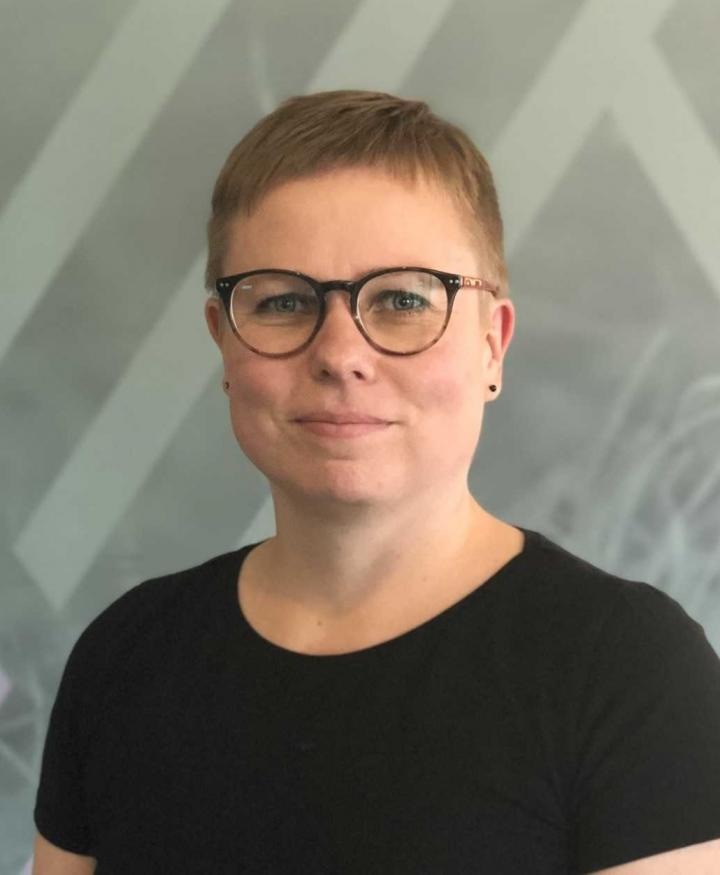Aug 5 2019
In her doctoral dissertation, M.Sc. Sanna Haavisto, investigated the flow properties of aqueous microcellulose suspensions. Optical coherence tomography, an imaging technology usually used in medical imaging of eyes, was applied in a unique way in her research.
 In her doctoral dissertation, M.Sc. Sanna Haavisto, researched the flow properties of aqueous microcellulose suspensions. (Image credit: University of Jyvaskyla)
In her doctoral dissertation, M.Sc. Sanna Haavisto, researched the flow properties of aqueous microcellulose suspensions. (Image credit: University of Jyvaskyla)
The measurement techniques formulated in the doctoral thesis can also be used in forming the material properties of microfibrillated celluloses, for example, in textile innovations.
Microfibrillated cellulose is formed by grinding cellulose fibers into a finely divided material in the micrometer range. A much finer material of microfibrillated cellulose is nanofibrillated cellulose. With several processing methods, micro- and nanofibrillated cellulose can be formed into very hard and flexible, transparent and translucent materials.
As probable constituents for new bio-based materials and high-end products, micro- and nanofibrillated celluloses are said to be one of the most favorable materials in the bioeconomy. One of the applications anticipating an innovation is textile fibers that created using such micro- or nanocellulosic materials. Presently, there are a number of textile innovations in Finland that are based on the excellence of pulp and paper industry.
In industrial-scale applications, it is crucial that the material and flow properties of the raw material are appropriately understood. Aqueous suspensions of microfibrillated cellulose are very complicated and, thus far, particularly poorly known for their flow properties. According to Sanna Haavisto, this is because of the limited availability of appropriate measurement techniques.
The measurement approaches can also be used in creating the material properties of microfibrillated celluloses
Haavisto's doctoral dissertation reveals how the fine structure of microfibrillated cellulose as well as their complicated flow phenomena can be seen and measured. Optical coherence tomography is well matched for investigating the flow properties of microfibrillated cellulose even under conditions akin to industrial processing. According to Haavisto, the most crucial finding of the doctoral thesis was the connection between the boundary layer behavior and the observed flow behavior.
Flow phenomena important for processing occur in the immediate vicinity of the flow channel wall, i.e. in the boundary layer, which cannot be measured for microfibrillated cellulose with commonly used methods. The measurement methods traditionally used may even provide misleading information.
Sanna Haavisto, Researcher, VTT Technical Research Center
The measurement approaches formulated in the doctoral thesis can also be applied in creating the material properties of microfibrillated celluloses. It is remarkable that the technique is not restricted to research of microcellulosic structures but is relevant to a broad range of materials.
Sanna Haavisto graduated from Pieksämäki High School in 1999. Between 1999 and 2004 Haavisto received a Master's degree in Applied Physics from the Department of Physics at the University of Jyväskylä. Following that, Haavisto worked for 10 years at the VTT Technical Research Center of Finland among complex fluid flows and processes associated with them. The dissertation's experimental research work was conducted at the VTT Technical Research Center of Finland.
Since 2015, Haavisto has worked with Spinnova, a fiber technology company, where she leverages her microcellulose flow and measurement expertise to transform the fiber sector. The doctoral thesis got financial support from the Academy of Finland (Rheology of Complex Fluids and Wood Fiber Filament projects) and the EU Horizon 2020 program.